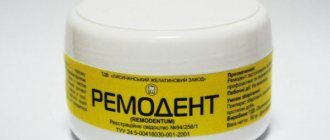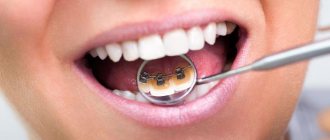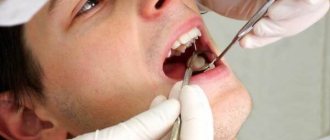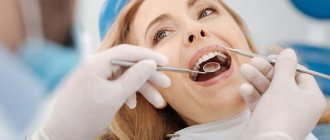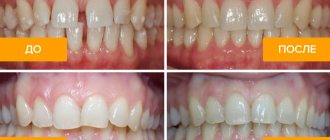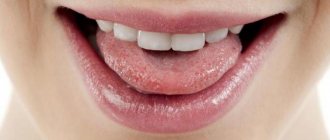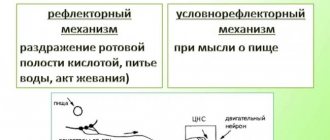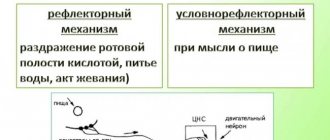Currently, medicine has come so far that diagnostic methods have become more accurate, and a variety of methods allows us to achieve an accurate diagnosis, and, therefore, the treatment prescribed by a doctor will be more effective. The medical center has its own clinical laboratory, which uses the most modern diagnostic methods. In particular, it is possible to use several methods to diagnose the presence of viruses in the human body. For example, a saliva test for viruses is the most informative and accurate.
Why is saliva taken for analysis?
Saliva is a biological fluid with important functions:
- ensuring food chewing;
- formation of a food bolus;
- swallowing function;
- oral cavity protection;
- Salivation is a process that produces lubricant.
It is a colorless liquid with a neutral alkaline reaction, which contains the following substances:
- antimicrobial components (lysozyme, secretory immunoglobulin A);
- digestive enzymes (ptialin, lingual lipase);
- epidermal growth factor;
- chloride, potassium, sodium and other electrolytes;
- amino acids, glucose, lactic acid, vitamins K, C, B1, H.
That is, the composition of saliva completely reflects the structure of blood plasma.
Saliva analysis
Author
Kauter Olga Leonidovna
Leading doctor
Therapist
until January 31
We are giving away 1000 rubles for all services for a visit in January More details All promotions
Saliva plays an important role in maintaining the health of the soft and hard tissues of the oral cavity. The functions of saliva include maintaining a neutral pH in the mouth, cleaning and remineralizing teeth, facilitating swallowing and digestion, and protecting oral tissues from drying out and invading microorganisms. Adequate saliva is essential to maintain oral health, and decreased secretion can contribute to problems such as tooth decay, mucositis, oral fungal infections, and periodontal disease.
Saliva has great potential as a diagnostic fluid. It can be used as a biological material for monitoring the general condition of the body, early diagnosis of diseases, and monitoring the progress of treatment. The main advantage of using saliva for these purposes is the simplicity and non-invasiveness of collection. The need to donate blood can sometimes be a psychological problem, since not everyone tolerates this manipulation well and much depends on the skill of the nurse. In the case of saliva, no such psychological threshold arises. Other advantages: smaller aliquots of the sample are needed for saliva analysis, the collected material is easy to store and transport, and saliva test results correlate well with blood counts.
What we call saliva is a mixture of secretions of the major and minor salivary glands, secretions of the mucous membrane, gingival fissure fluid, serum and blood derivatives from oral wounds, desquamated epithelial cells, expectorated bronchial and nasal secretions, bacteria and bacterial products, viruses and fungi, other cellular components and food debris. It is a complex fluid containing a full range of hormones, proteins, enzymes, antibodies, antimicrobial components and cytokines. These components penetrate into saliva from the blood, which is why in many cases it is possible to use salivary biomarkers instead of blood biomarkers.
Saliva is primarily used in the diagnosis of systemic diseases. Modern technologies have enabled the identification of a large number of medically valuable salivary biomarkers for a variety of disease conditions, including cancer, autoimmune, viral, bacterial, cardiovascular, and metabolic diseases. Saliva is actively used as a biomaterial for PCR diagnostics of infections, as well as for assessing the concentration of various hormones.
Sign up for diagnostics Do not self-medicate. Contact our specialists who will correctly diagnose and prescribe treatment.
Sputum. General clinic
- Sputum is collected in the morning, on an empty stomach. Before collecting sputum, brush your teeth and rinse your mouth with water to remove food particles and bacterial plaque. Take two deep breaths, holding your breath for a few seconds, and after each deep breath exhale slowly. Then inhale a third time and forcefully exhale (push) the air out. Inhale again and clear your throat well.
- Hold the container as close to your mouth as possible and carefully spit the mucus into it after coughing. Be careful not to get any sputum on the edge of the container. Do not touch the inside of the lid or the sides of the sterile container with your fingers. Close the container tightly with the lid.
- Wash your hands with soap.
- Deliver the morning sputum collected for research to the laboratory no later than 1–1.5 hours after collection. In this case, conditions must be created to prevent its cooling during transportation. Otherwise, changes in sputum qualities and the composition of microbial colonies will quickly occur, which may distort the results of the study.
Attention! Do not collect sputum released during expectoration. Saliva entering the sample can significantly affect the test result.
Why is saliva testing required?
The standard sample for DNA profiling is blood. For examination, 20 ml of venous blood is sufficient. This material is considered the highest quality and most reliable. However, there are many situations in which it is not possible to take a blood sample.
For example, when establishing a close relationship, biomaterial is needed from the alleged father, mother and child. And if a man or woman refuses to donate blood for analysis, the person concerned resorts to non-standard samples.
These include nails, hair - always with the root, since the hair itself is a dead cell, sperm, personal and hygiene items. And, of course, saliva.
Ways to Reduce Oral Germs
- Carry out oral hygiene procedures regularly and thoroughly.
- If necessary, the patient is prescribed a medication that can increase or decrease acidity levels. In addition, with the help of certain medications, the natural microflora of the oral cavity is restored. The drug helps eliminate harmful bacteria, which have the property of rapidly multiplying and spreading to vital organs and systems of the human body.
- Normalize nutrition. Acidity in the mouth can change if there are insufficient amounts of vitamins and minerals in the body.
To prevent the development of dental disease, it is necessary to regularly monitor the condition of the entire oral cavity.
Expert of the article you are reading:
The hormone of vigor and stress: how to properly test saliva for cortisol
Cortisol is commonly associated with stress and a number of negative consequences. However, in fact, it is what ensures awakening and vigor, promotes motivation and efficiency, maintains the “right” level of blood pressure and “sugar”, and also “slows down” the immune system from triggering allergic, autoimmune and other distorted reactions. But the direction of the effects of cortisol is determined by the level of its “dose” in the blood. And the bias, both towards “+” and “-”, obviously does not bode well.
Circadian rhythms
As you know, most hormones in the body have a more or less definite daily rhythm of release.
Cortisol, in this sense, is one of the most time-sensitive hormones, and its “work schedule” looks something like this:
- At about 4-5 o'clock in the morning, cortisol begins to pulse into the blood to prepare the body for awakening, which is manifested by an increase in blood pressure, pulse, and a decrease in blood clotting. And that is why the highest incidence of heart attacks and strokes occurs in the early morning hours;
- at 6-8 o’clock in the morning the hormone level reaches a maximum, which can shift by 1-2 hours both towards “-” and “+” - for “larks” and “night owls”, respectively;
- from 8-9 to approximately 12 noon - the cortisol concentration is slightly lower than the maximum in the morning, but is sufficient to maintain vigor and activity;
- and in the period from 12 to 15 days - the level of the hormone begins to decline inexorably,
- True, by about 15-16 hours, adjusted for “larks” and “night owls”, some may feel the so-called “second wind”, usually lasting no more than 1-2 hours and not reaching the morning level in hormone concentration;
- and then cortisol finally “declines”;
- and around 22-24 hours at night - reaches its minimum daily value and remains this way until 4-5 in the morning, when it begins to increase again and the daily cycle repeats.
Why not the norm?
Based on the above, it is obvious that it is advisable to take tests for cortisol (and in particular, saliva) several times a day, or at least in the early morning and evening (7.9.A1).
An increase in cortisol concentrations in the morning may indicate getting up too early (which is “regarded” by the body as stress), working night shifts, or a “banal” lack of sleep. It is also typical for pathology of the adrenal glands (Itsenko-Cushing’s disease), some diseases of the pituitary gland (since it “sets” the level of cortisol), as well as hyperfunction of the thyroid gland.
Exceeding standard concentrations in the evening is associated with obesity and other disorders of fat and carbohydrate metabolism, as well as with the above diseases.
And a lack of cortisol both in the morning and evening hours can be a consequence of Addison's disease, adrenal hyperplasia, some pathologies of the pituitary gland and a lack of thyroid hormones and requires a visit to an endocrinologist.
Rules for sputum collection
It is unacceptable to send sputum for examination in containers not intended for these purposes, as they may contain substances that can distort the test results.
Sputum should not be divided into two parts for examination in different laboratories, since important components may end up in only one of the containers.
- Sputum is collected in the morning, on an empty stomach. Before collecting sputum, brush your teeth and rinse your mouth with water to remove food particles and bacterial plaque. Take two deep breaths, holding your breath for a few seconds, and after each deep breath exhale slowly. Then inhale a third time and forcefully exhale (push) the air out. Inhale again and clear your throat well.
- Hold the container as close to your mouth as possible and carefully spit the mucus into it after coughing. Be careful not to get any sputum on the edge of the container. Do not touch the inside of the lid or the sides of the sterile container with your fingers. Close the container tightly with the lid.
- Wash your hands with soap.
- Deliver the morning sputum collected for research to the laboratory no later than 1–1.5 hours after collection. In this case, conditions must be created to prevent its cooling during transportation. Otherwise, changes in sputum qualities and the composition of microbial colonies will quickly occur, which may distort the results of the study.
Attention Do not collect sputum released during expectoration, only when coughing. Saliva entering the sample can significantly affect the test result.
Indications for saliva testing for free hormones
- With age-related changes in hormonal status.
- Presence of symptoms of premenstrual syndrome in women.
- Changes in hormonal levels in pre- and postmenopausal states for the correct prescription of replacement therapy drugs.
- If necessary, control after completion of hormone replacement therapy.
- Persons of both sexes with symptoms of hormonal imbalance.
In addition, potential users may be people with the following symptoms: chronic fatigue, insomnia, decreased immunity, obesity/overweight, high blood sugar, sexual dysfunction, getting up at night to go to the toilet.
Before taking the test, it is not recommended to eat or drink drinks for an hour. For 10 minutes, rinse your mouth with clean water. You should refrain from taking hormonal medications for 48 hours before taking the test. To assess the effectiveness of therapy, drugs should not be discontinued.
Sputum. Microscopic mushrooms (complex)
Sputum is collected before starting antibiotic therapy. First brush your teeth, gums and tongue with a toothbrush and rinse your mouth with boiled water at room temperature.
Collection procedure
- Take two deep breaths, holding your breath for a few seconds, and after each deep breath exhale slowly. Then inhale a third time and forcefully exhale (push) the air out. Inhale again and clear your throat well.
- Hold the container as close to your mouth as possible and carefully spit the mucus into it after coughing. Be careful not to get any sputum on the edge of the container. Do not touch the inside of the lid or the sides of the sterile container with your fingers. Close the container tightly with the lid.
- Wash your hands with soap.
- Deliver the morning sputum collected for examination to the laboratory.
Attention! A high-quality material for analysis is considered to be sputum that is mucous or mucopurulent in nature, and also contains dense whitish inclusions.
Sputum. Tuberculosis
- Sputum is collected in the morning, on an empty stomach. Before collecting sputum, brush your teeth and rinse your mouth with water to remove food particles and bacterial plaque. Take two deep breaths, holding your breath for a few seconds, and after each deep breath exhale slowly. Then inhale a third time and forcefully exhale (push) the air out. Inhale again and clear your throat well.
- Hold the container as close to your mouth as possible and carefully spit the mucus into it after coughing. Be careful not to get any sputum on the edge of the container. Do not touch the inside of the lid or the sides of the sterile container with your fingers. Close the container tightly with the lid.
- Wash your hands with soap.
- Deliver the morning sputum collected for research to the laboratory no later than 1–1.5 hours after collection. In this case, conditions must be created to prevent its cooling during transportation. Otherwise, changes in sputum qualities and the composition of microbial colonies will quickly occur, which may distort the results of the study.
Attention! You should not collect sputum released during expectoration, only when coughing. Saliva entering the sample can significantly affect the test result.



